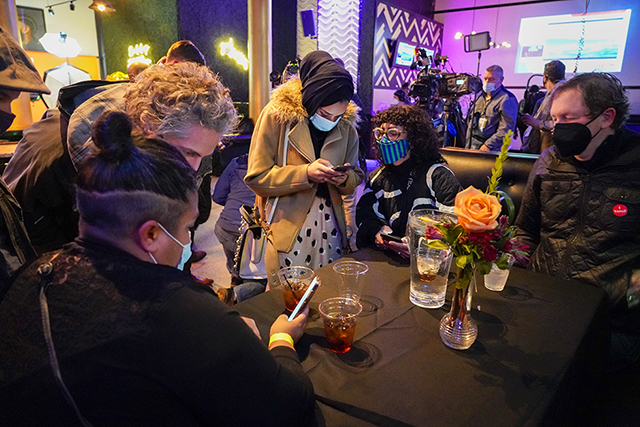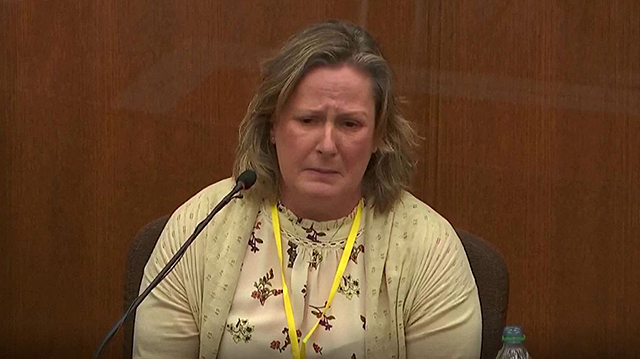On May 25, 2020, George Floyd was murdered by then-Minneapolis Police officer Derek Chauvin after Chauvin held his knee on Floyd’s neck for 9 minutes as bystanders and three other officers stood by. In the three years since, millions of people have taken to the streets to protest racial injustice in policing, hundreds of police reform bills have been proposed and passed in legislatures nationwide.
The city where it happened has seen many calls for reform in the time since Floyd was killed, from proposals to defund the city’s police department to bans on police practices like pretextual stops and no-knock warrants. Though some of those have come to fruition, others have not.
Here are some of the things that have changed — and some that haven’t — since Floyd’s death three years ago.
“Defund the police”
Weeks after Floyd’s murder, during a rally at Powderhorn Park in south Minneapolis, nine of 13 Minneapolis City Council members in office at the time stood on a stage in front of a “Defund the Police” banner and pledged to dismantle the Minneapolis Police Department.
This sparked debate over the function and utility of police in their modern form, and launched a year and a half campaign to change the Minneapolis city charter to replace MPD with a Department of Public Safety. The “Yes 4 Minneapolis” campaign collected enough signatures to get the initiative – which would have shifted authority over the police from the mayor over to the city council — on the ballot.

The police department still exists, though now with a new chief. MPD also now resides alongside departments like the Department of Neighborhood Safety (formerly the Office of Violence Prevention) after the public safety apparatus in Minneapolis was restructured so they could all be under the Office of Community Safety led by Cedric Alexander, who was brought on last year.
Despite the calls to slash police budgets, MPD’s budget has gone up in the three years since the start of the “defund” movement, as have the budgets of many other departments nationwide. MPD saw a dip in its budget in 2021 from $182 million in 2020 to $169 million before going back up to $180 million in 2022. The department’s 2023 budget now sits at $205 million – the highest it has ever been.
Pretextual stops
In April 2021, as Chauvin’s murder trial was ongoing in downtown MInneapolis, then-Brooklyn Center Police officer Kimberly Potter fatally shot 20-year-old Daunte Wright during a traffic stop in the suburb just miles away.

Brooklyn Center has also banned the practice and other jurisdictions have also followed suit. Ramsey County Attorney John Choi said his office would stop prosecuting cases that result from low-level traffic stops due to the disproportionate impact those stops have on residents of color.
No-knock warrants
In November 2020, Frey announced a policy change that would aim to limit the use of no-knock warrants by MPD officers. But more than a year later, a Minneapolis SWAT team entered a downtown Minneapolis apartment – without knocking and with a key – and fatally shot 22-year-old Amir Locke.
Frey announced a moratorium on all no-knock search warrants a couple months later, but not before protesters took to Minneapolis City Hall to demand the officers be fired. The officers were not fired, and no criminal charges were brought against them.

New police chief
Former MPD Chief Medaria Arradondo, who oversaw the department during Floyd’s murder, announced his retirement in late 2021 after being with the department since 1989. He was appointed chief in 2017 by then-Mayor Besty Hodges, becoming the city’s first Black police chief. He was a Native son who rose up through the ranks and called out misconduct within the department, including when he sued MPD while still an officer in 2007 for racial discrimination.

But in the wake of Floyd’s death, some residents and activists soured on the notion that Arradondo could be a change agent at the department.
Amelia Huffman held the chief position in the interim as Frey and the city searched for a replacement. That replacement was Brian O’Hara, a former captain of the Newark Police Department and eventual director for the city’s public safety system.
O’Hara has experience dealing with the court-enforceable agreement process due to Newark’s consent decree with the Department of Justice.
Alternative and unarmed responses
Since Floyd’s murder, a lot of scrutiny has been focused toward the public safety apparatus as a whole, and whether the current model of sending armed police officers to every 911 call hindered more than it helped in certain situations.
The city has given funding to various nonprofits that act as “violence interrupters,” fanning out across the city in brightly colored T-shirts to prevent violence in high-crime areas. Counties have been providing social workers local police departments to embed as a way to provide direct social services to people experiencing homelessness or mental health issues.
Investigations into MPD
In the days after Floyd’s death, the Minnesota Department of Human Rights launched an investigation into MPD to determine whether the department had engaged in a pattern or practice of racist policing. Nearly two years later, MDHR officials released a report with their findings, alleging that the department had violated the Minnesota Human Rights Act and used discriminatory policing for a decade that included racial disparities in traffic stops and use of force.
The city and MDHR have agreed to a court-enforceable settlement agreement outlining a list of changes MPD and the city must carry out. The Department of Justice launched their own investigation into MPD as well, which is still ongoing.


0 Commentaires